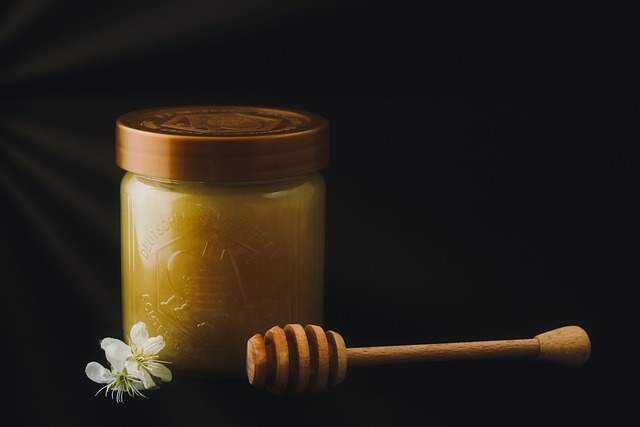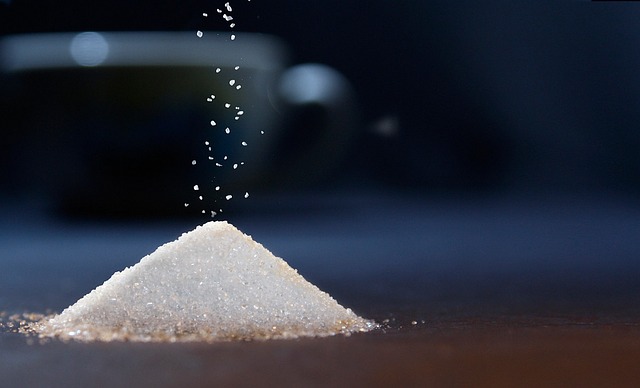There is more to life than refined white sugar! Nature is full of natural sweeteners that are much better for your health. Many sweeteners are rich in vitamins and minerals, have a low glycemic index, and are lower in calories than traditional sugar.
Discover the 10 best alternatives to white sugar, and adopt these natural sugars without delay to sweeten your hot drinks and yogurts and prepare your pastries.
1. Honey

Honey is a great alternative to regular white sugar in any recipe. Rich in enzymes, minerals, and vitamins, it has many proven health properties. Being antiseptic and antibiotic, it helps to fight against bacteria responsible for ENT or digestive infections.
It helps to reinforce the immune system, supports digestion, has depurative virtues, ideal after a drunken evening, and helps to prevent seasonal allergies…
Good to know: the glycemic index of honey (i.e., its capacity to increase the sugar level in the blood) varies according to its origin. The one with the lowest GI is acacia honey (GI 35), and the one with the highest GI is flower honey (GI 80, the equivalent of white sugar).
2. The maple syrup
Made from the raw sap of maple trees, maple syrup is an ideal alternative to sugar in yogurt, cakes, or hot drinks. It can even be used to lacquer or caramelize certain foods, such as chicken.
It is particularly rich in minerals (manganese and zinc).
It also contains many antioxidants.
Maple syrup has the particularity of having a low glycemic index (54), which allows diabetics to consume it.
A recent Canadian study even showed that it contains more than 50 compounds beneficial to health, and that it is up to 5 times richer in antioxidants than honey!
Good to know: maple syrup is also slightly lower in calories than honey, with about 55 kcal per tablespoon compared to 66 for honey.
3. Agave syrup
Made from the sap of a Mexican cactus, agave syrup is very similar to maple syrup. Its sweet and neutral taste allows it to be used in many recipes or to sweeten dairy products and hot drinks.
It is often adorned with many virtues, but beware, not all agave syrups sold in stores are equal. Depending on the manufacturing process and the agave from which it is made, its glycemic index can vary greatly, from 55 to 90, equivalent to white sugar. It is, therefore, always better to choose quality!
4. Stevia
Stevia is a plant that has been cultivated for centuries in South America for its naturally sweetening properties. It has the particularity of being totally natural, and of having zero calories!
It can be found today in different forms:
in powder;
in bars;
in liquid concentrate;
in the form of fresh or dried leaves.
Check the labels carefully because the plant is often present in very small quantities, often associated with other sweeteners, much less natural. To be sure to buy natural and unrefined stevia, buy it in organic stores. You will find it in the form of a green powder, with a slight licorice taste.
Good to know: its sweetening power is 300 times greater than that of white sugar. No need to put several spoonfuls to sweeten a dessert or a drink, a pinch is enough. So be careful with the dosage!
5. Coconut blossom sugar
As its name suggests, coconut blossom sugar is made from the sap of the coconut palm. This unrefined sugar has a light caramelized taste that is very pleasant in desserts (but without the coconut flavor).
Its glycemic index is particularly low: 26.5. It is lower than all other natural sugars, except for stevia. It is also very rich in antioxidants (its content is comparable to some berries such as blueberries!) but also in minerals and trace elements: magnesium, potassium, zinc and iron.
Good to know: its color, more or less brown, depends on the manufacturing process (and not on a possible refining, as it is the case for cane sugar). The darker it is, the more pronounced its taste.
6. Whole cane sugar
Whole cane sugar is obtained directly from concentrated and dehydrated sugar cane juice. It is brown and has a more or less pronounced caramel taste.
Because it is not refined or chemically processed, it retains all the properties of sugar cane, including its richness in trace elements (calcium, magnesium, potassium, and iron) and vitamins (B and E).
7. Molasses
Molasses is the residual syrup obtained during the manufacture of cane or beet sugar crystals. It is a thick, viscous syrup with a very dark color. It has a strong taste reminiscent of licorice.
It can be used in the same way as sugar:
in yogurt;
hot drinks;
pastries;
marinades;
salad dressings.
This natural sugar has the advantage of being particularly rich in minerals (especially potassium, iron, and magnesium). It is, therefore, beneficial in the case of the following:
fatigue;
high blood pressure;
heart problems;
cramps;
anemia;
constipation.
Caution: its sweetening power is higher than white sugar, so you should use less.
8. Palm sugar
Originating from Asia, this sugar, sold as blocks or golden paste, is mainly used to manufacture curries or iced teas. It develops a delicate taste reminiscent of caramel and spices and brings a little exotic touch to many dishes.
Mainly composed of fructose, palm sugar does not cause blood sugar peaks when consumed. However, it is not a question of abusing it because it remains as caloric as ordinary sugar.
Palm sugar can be found in Asian grocery stores and health food stores.
Good to know: palm sugar comes from the sap of the sugar palm. It is not the same species as the one from which palm oil is extracted, whose cultivation contributes to deforestation.
9. Cereal syrups
Cereal syrups are obtained from the fermentation of the starch in cereals such as wheat, barley, corn, or rice. Their taste is more or less pronounced depending on the grain from which they are made. For example, the flavor of rice syrup is more present than wheat syrup.
These syrups have the advantage of containing several types of sugars assimilated gradually, providing energy over time. They have another advantage: they provide vitamins and minerals.
Good to know: the glycemic index of these products is often high (especially for rice syrup with a GI of 100). So be careful if you have diabetes!
10. Kitul sap
This natural sugar is made from the sap of the flowers of a Sri Lankan palm tree. It has the particularity of containing the same proportions of fructose, glucose, and sucrose (three different sugar types), making it particularly assimilable.
Kitul sap is also rich in vitamins B and C and minerals (calcium and iron in particular). As for its glycemic index, it has not yet been calculated.
Good to know: it has a slightly caramelized taste and can be used hot or cold, as an alternative to sugar, in all your preparations.


